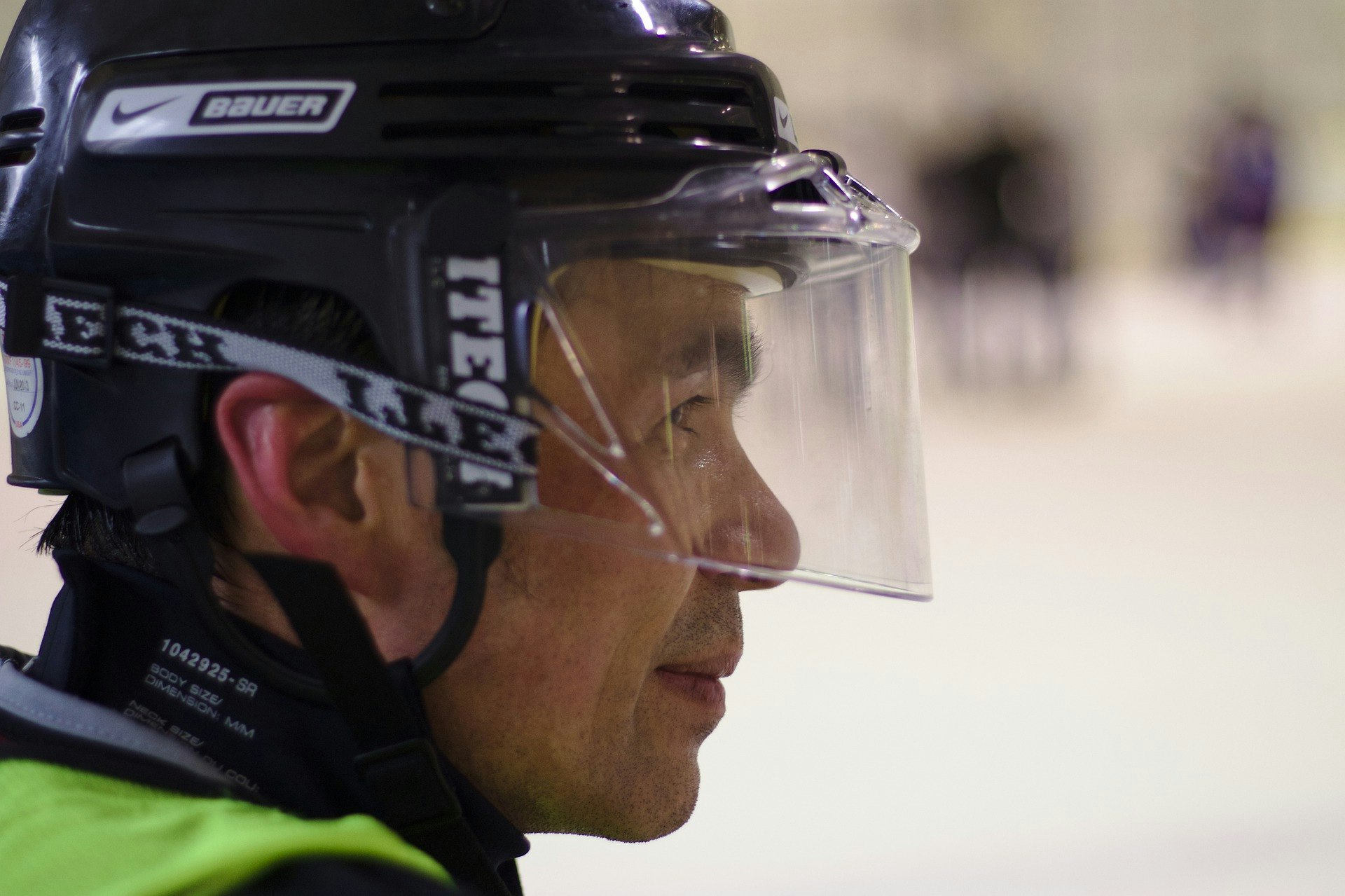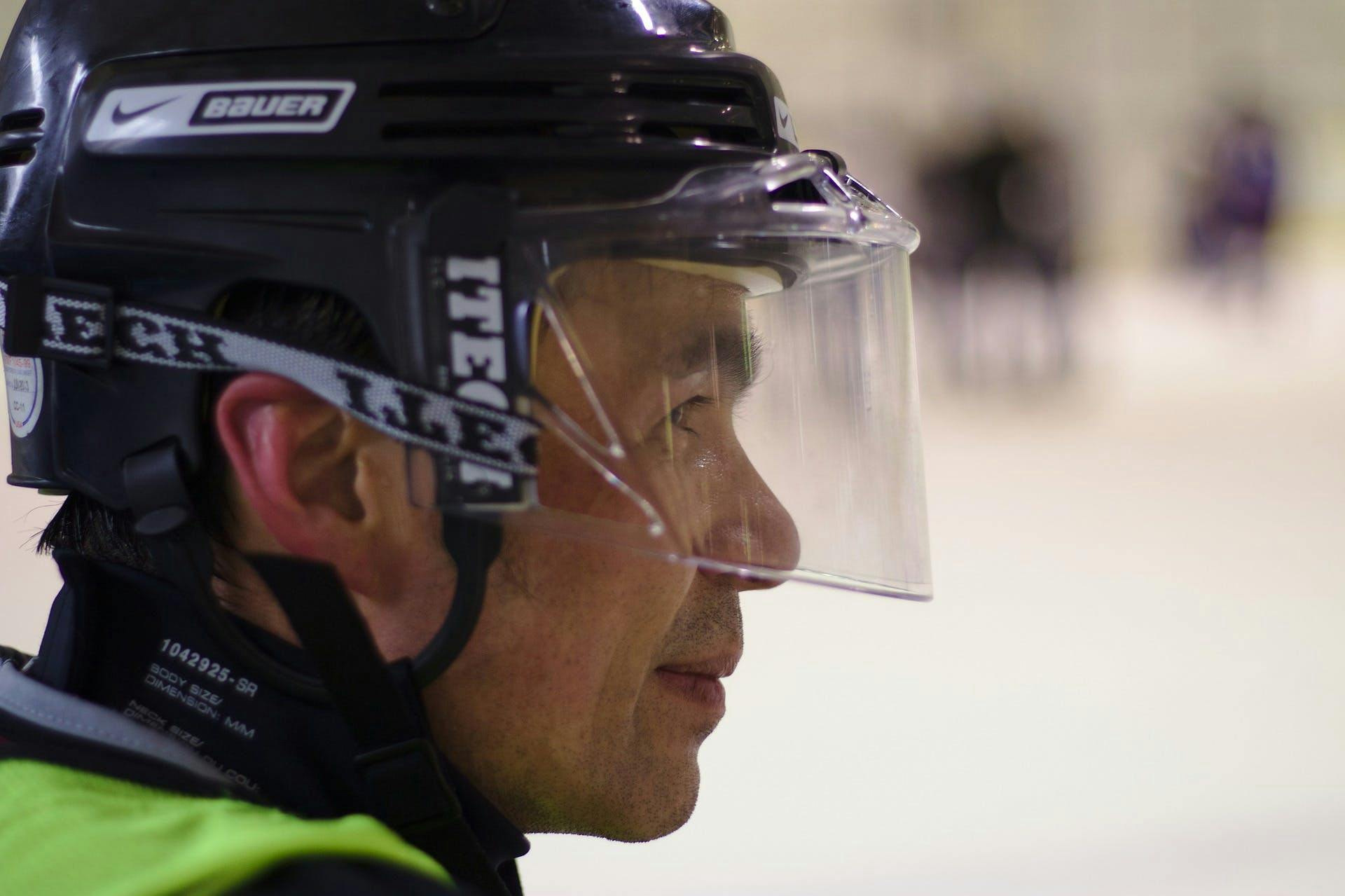Although sticks and skates are necessities for playing ice hockey, the most important piece of equipment is arguably the helmet.
Head injuries are among the most serious injuries you can get while on the ice, and a helmet will go a long way in protecting against them. Even in no-contact leagues, such as Shinny, accidental contact does occur from time to time. By wearing a helmet, you can drastically decrease the risk of injury from hitting the ice, boards, or another player. And at the end of the day, we all want to be able to enjoy hockey without worrying about being injured.
Hockey Helmet Fit

When you put a helmet on, it should fit snugly on your head without any wiggle-room. If the helmet is loose enough to wiggle around, it won’t do a very good job of protecting your head in the event of an impact. You want a helmet that moves with your head, even in the event of a big impact, so that all the padding is covering the right spots and it can effectively cushion the blow. Additionally, a helmet should not be so tight as to be painful or uncomfortable to wear. The padding of a helmet is not meant to be broken in the same way skate padding is.
If you’re having trouble finding a helmet that fits perfectly, there are some size-adjustable options out there. However, this feature is generally reserved for higher-end helmets, so you’ll have to pay more for that feature. But, higher-end helmets do tend to offer better protection, so it may be worth it in the end.
Protection Against Impacts
Helmets combine a hard, exterior shell with soft, interior padding to provide two layers of protection for the head and brain. The outer shell is going to be made out of some kind of plastic and serves the purpose of preventing your head from coming in direct contact with other objects. The thickness, weight, and other qualities of the plastic used are generally tied to the price. More expensive helmets may have lighter-weight outer shells that still provide just as much, if not more, protection than the exteriors of cheaper options.
The interior padding of the helmet is primarily there to protect your brain. It softens the impact and therefore helps to protect against concussions and other brain injuries. Of course, no helmet can protect you 100% of the time, and you should still be checked for a concussion after an accident in which your head makes contact with something.
Depending on the price of the helmet, different materials may be used for the interior padding. Various types of foam are the most common currently. However, some high-end helmets are using gel padding, which offers improved protection. In the future, we may see this gel padding being implemented in more affordable helmets. Regardless of what type of padding is used, all helmets are certified by the Hockey Equipment Certification Council (HECC) for 6.5 years after the date of manufacture. The padding breaks down and becomes less effective over time, so it’s important to buy a helmet that’s still certified, even if used.
Face Protection

When it comes to face protection, there are four options to choose from: Cages, full face shields, visors, and no protection.
Cages offer the best protection against impacts. However, small objects can still penetrate the cage and potentially get in your eyes. Additionally, the wire of the cage may obstruct your field of view slightly.
Face shields protect the whole face without restricting sight in the same way cages do. The trade-off is that they may not be quite as effective when it comes to hard impacts as a cage is.
Visors provide less protection than face shields, as they are effectively just face shields that don’t cover the lower face. They’re lighter-weight than face shields and still protect the eyes, but not the mouth.
No face protection is an option that some of our members choose. Since Shinny is a no-contact league, face protection isn’t as important as it otherwise would be. But, we still recommend face protection of some sort just in case. You never know when you may be struck by a wild puck or even a stick on accident. And since you’re protecting the rest of your head with a helmet, why leave a huge gap in the front?
Ice Hockey Helmet Price

The pricing of helmets can differ wildly depending on the materials used and features included. They can be found for as little as $25 or as much as over $300. Cheaper helmets will provide the least amount of protection, so you will have to determine how much you value the extra protection provided by higher-end options. Our recommendation is to go with the most protective helmet within your price range. If your limit is $75, go with a $75 helmet; if it’s $200, go with a helmet around that price.
Hopefully, your helmet won’t have to do its job of protecting your head. But just in case it does, spending a bit more for the extra protection a good helmet provides can make the difference. One way to finance a more expensive helmet purchase is to select cheaper options when it comes to some of your other gear. You may not want to go cheaper when it comes to your skates, but a cheaper stick isn’t going to be detrimental for most players. The money you save on your stick purchase can be put towards your helmet.
Conclusion
Selecting an ice hockey helmet might not seem like that important of a choice at first. After all, a helmet doesn’t help you play any better. But choosing one that fits properly, adequately protects against impacts, has some form of face protection, and falls within your price range can be complex. Often, the result is balancing the protection and features you want with the price tag they come with.
Shinny USA
Are you looking for a recreational adult hockey league? Shinny USA might just be the right fit for you! With participating rinks throughout the greater Philadelphia area and players of all skill levels, from beginners to former pros, we make it as easy as possible to hit the ice with other hockey fans. Contact us today to sign up.
